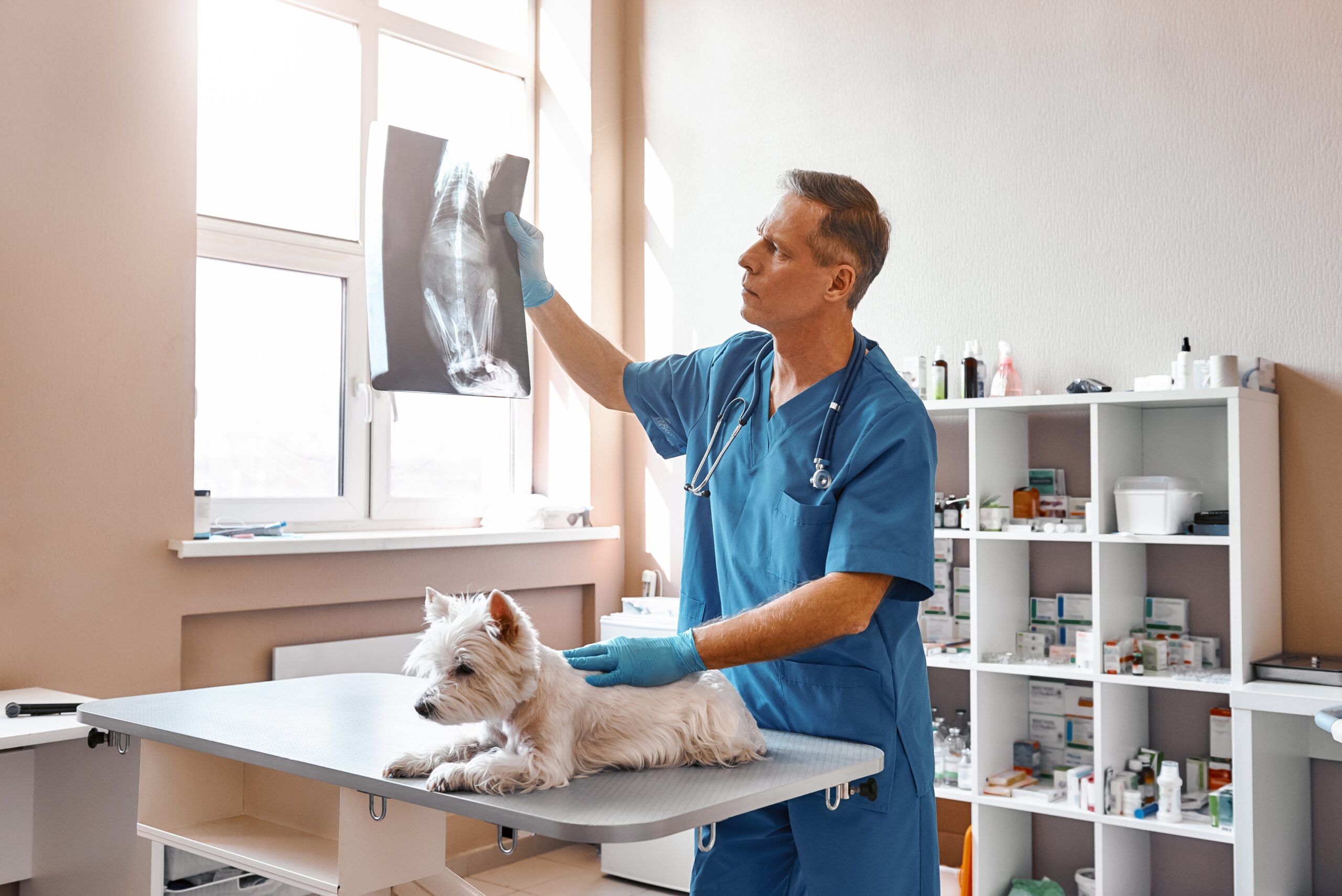The U.S. veterinarians’ market is booming thanks in part to the growing popularity of animal adoption (and in turn, wider use of pet insurance and expenditure on pet well-being).
According to Grand View Research, the U.S. vet market was valued at just over $11 billion in 2021. If the industry continues to expand as expected — by a compounded annual growth rate of 8.7% — then the market will be worth $23.3 billion by 2030. Meanwhile, veterinary medicine is on the cusp of a technological revolution. Both the industry’s dramatic growth and emerging technologies will have implications for property carriers.
Must-have medical equipment for modern vet clinics and hospitals
Several technologies are currently in use at established vet clinics and hospitals. These technologies are not much different than those employed for human care. Other technologies being developed have the potential to transform the future of pet care. Regardless of a technology’s age or use, there are notable risk considerations associated with electronic and electric equipment.
There is a list of “must-have” equipment you’d find in any of today’s modern vet clinics and hospitals: anesthesia carts, patient telemetry systems, autoclaves and sterilizers, ultrasounds, C-arms (fluoroscopy), computerized typography (CT) scanners, magnetic resonance imaging (MRI) and defibrillators, among others. These everyday essential tools are comparative to those found at human medical facilities, and in either case, equipment does not always operate as intended. However, there is one important distinction: Unlike human medical equipment, the Food and Drug Administration (FDA) does not require submission of a 510(k) — a 90-day advanced notice regarding intent to market — pre-market authorization or pre-approval for devices intended for animal use.
Revolutionary technologies
Many groundbreaking veterinary technologies parallel those that are making waves in human-based medical care. Telemedicine, for example — the remote diagnosis and treatment over the phone or video chat — allows veterinarians to frequently monitor their patients, ensure timely care and bypass any travel/face-to-face interaction restrictions. Wearable devices will allow doctors to continuously track the animals’ health, procure real-time feedback and detect potential problems early. Additive manufacturing, otherwise known as 3D printing, may prove to be invaluable when treating difficult or complex conditions; it enables veterinarians to construct custom prosthetics and orthotics and create a 3D model of an animal’s internal organs. Finally, artificial intelligence (AI) is also being utilized in the field of diagnosis. By analyzing large amounts of data, AI programs can use the information to generate diagnoses quicker and more accurately.
Equipment lifespans, pre-loss factors and disaster risks
Most hospitals and imaging centers purchase service contracts from at least one original equipment manufacturer (OEM) for post-warranty service of their diagnostic equipment. Like any other system, medical equipment can malfunction — at times, catastrophically. According to the European Society of Radiology (ESR), radiological equipment has a finite life cycle span, meaning an unavoidable breakdown or loss of image quality that will eventually render it useless (replacement may be essential for equipment after 10 years). As equipment ages, operating costs rise, maintenance becomes increasingly difficult and the risk of failure and breakdown rises, causing potential diagnosis/treatment delays and safety problems.
Still, purchasing refurbished equipment is common in the veterinary market due to its attractive cost compared to buying new. In an industry that is not required to adhere to the FDA pre-market approval process, oversight of equipment quality, functionality and maintenance is often performed on a best-effort basis. This is integral when considering the equipment’s pre-loss condition.
Though extremely rare, medical equipment dysfunction carries the risk of disaster, such as an explosion, gas leak or fire. In 2014, for example, a faulty autoclave — a piece of equipment used to sterilize instruments — started a fire in a vet clinic housed in a single-story building. The fire rendered the building a total loss. In another instance, an MRI gantry exploded at an animal hospital while three technicians were dismantling the unit. And in 2021, fire crews responded to a hazmat situation at a pet hospital after a gas used to sterilize surgical equipment had leaked. Oxygen tanks, too, can cause fire or explosions if equipment is improperly utilized or a leak occurs.
Loss considerations
Post-loss equipment evaluations at veterinary clinics are nearly identical to assessments at medical facilities for humans. Depending on the scenario, some equipment may be a candidate for restoration, while other times the cost to restore could be the same as or higher than replacement. Regardless of the peril, experienced engineers should be engaged to recommend ways to mitigate business interruption and help the veterinarian get their equipment restored to a pre-loss condition.
> Learn more — visit efiglobal.com or check out an expanded version of this article here.

